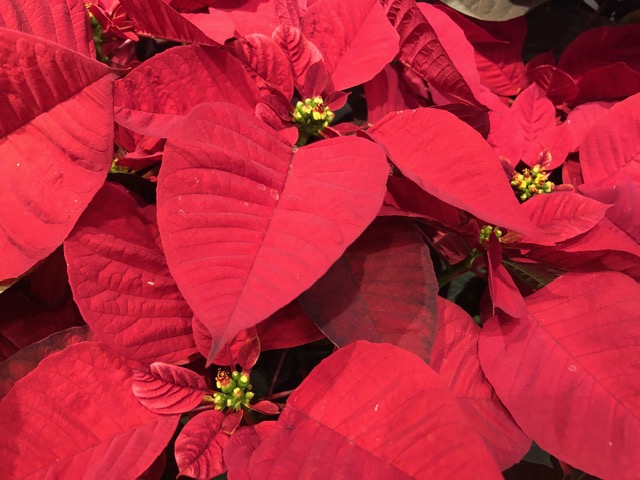
Some much-needed rain may be coming soon

|
| Poinsettias prefer warm, sunny spots. Don't forget to water them thoroughly after you bring them home and regularly afterwards. (Photo: Kathy Morrison) |
“Keep your umbrellas handy” – how long has it been since you read that phrase?
But that’s the advice ahead of what could (finally) be a soggy week in Sacramento.
According to the National Weather Service, expect “unsettled weather next week,” starting with light showers in northern California on Monday and Tuesday. Sacramento will see a better chance of widespread rain Thursday and Friday. Late week mountain snow is possible.
But the weather service added this disclaimer: “Medium forecast confidence.”
Similar weather systems have flirted with Northern California this season only to bend north. Drenched by atmospheric rivers, Seattle recorded its wettest November in history with some suburbs recording more than 14 inches.
Meanwhile, California has been extremely dry. Los Angeles saw its first rainless November in more than 30 years. Sacramento’s November rain total (0.72 inches) was about 40% of average.
What’s average for December? Historically, 3.25 inches.
Rain or no rain, patchy ground fog will continue, says the weather service. That will keep high temperatures just about normal for early December: 58 to 62 degrees. Overnight lows will stay relatively warm in the mid 40s.
Make the most of dry days in your garden:
* Prune non-flowering trees and shrubs while they're dormant.
* Brighten the holidays with winter bloomers such as calendulas, Iceland poppies, pansies and primroses.
* Keep poinsettias in a sunny, warm location. Water thoroughly.
* Rake and remove dead leaves and stems from dormant perennials.
* Remember to water, especially seedlings, new transplants and potted plants.
* Plant garlic and onions.
* Plant one last round of spring bulbs. Get the tulips out of the refrigerator.
* Bare-root season begins. Plant bare-root roses, berries, kiwifruit, grapes, artichokes, horseradish and rhubarb.
Comments
0 comments have been posted.Sacramento Digs Gardening to your inbox.
Sites We Like
Garden Checklist for week of April 21
This week there’s plenty to keep gardeners busy. With no rain in the immediate forecast, remember to irrigate any new transplants.
* Weed, weed, weed! Get them before they flower and go to seed.
* April is the last chance to plant citrus trees such as dwarf orange, lemon and kumquat. These trees also look good in landscaping and provide fresh fruit in winter.
* Smell orange blossoms? Feed citrus trees with a low dose of balanced fertilizer (such as 10-10-10) during bloom to help set fruit. Keep an eye out for ants.
* Apply slow-release fertilizer to the lawn.
* Thoroughly clean debris from the bottom of outdoor ponds or fountains.
* Spring brings a flush of rapid growth, and that means your garden is really hungry. Feed shrubs and trees with a slow-release fertilizer. Or mulch with a 1-inch layer of compost.
* Azaleas and camellias looking a little yellow? If leaves are turning yellow between the veins, give them a boost with chelated iron.
* Trim dead flowers but not leaves from spring-flowering bulbs such as daffodils and tulips. Those leaves gather energy to create next year's flowers. Also, give the bulbs a fertilizer boost after bloom.
* Pinch chrysanthemums back to 12 inches for fall flowers. Cut old stems to the ground.
* Mulch around plants to conserve moisture and control weeds.
* From seed, plant beans, beets, cantaloupes, carrots, corn, cucumbers, melons, radishes and squash.
* Plant onion sets.
* In the flower garden, plant seeds for asters, cosmos, celosia, marigolds, salvia, sunflowers and zinnias.
* Transplant petunias, zinnias, geraniums and other summer bloomers.
* Plant perennials and dahlia tubers for summer bloom.
* Mid to late April is about the last chance to plant summer bulbs, such as gladiolus and tuberous begonias.
* Transplant lettuce seedlings. Choose varieties that mature quickly such as loose leaf.